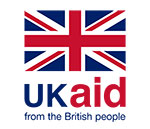Publishing our 2021 annual report provides the opportunity to reflect on another eventful year in our Mobile for Humanitarian Innovation (M4H) programme. Humanitarian needs continued to rise, and digital services and solutions were increasingly used in preparedness, response, and recovery. We appreciate the continued collaboration with our partners that is demonstrated throughout this report.
Although 2021 saw the world begin to adjust to a “new normal” with COVID-19 vaccines rolled out, at least in high-income countries – for those affected by humanitarian crises COVID-19 was just one of many challenges to their lives and livelihoods. Disasters from climate-related hazards, displacement caused by conflict, and food insecurity – sometimes in combination, remained a stark reality for millions. 2021 marked a significant increase of humanitarian needs in Afghanistan, an earthquake in Haiti, and landfall of Super Typhoon, Rai that caused devastation across the Philippines. We closed 2021 with 274 million people expected to require humanitarian assistance and protection in 2022. As we publish this year’s annual report in March, we have already seen people affected by an earthquake and tsunami in Tonga, a cyclone in Madagascar, and the war in Ukraine where millions have been forced from their homes.
Against this backdrop, digital technology, and mobile in particular, played a greater role in the lives of people in crisis and those responding with support, whether local communities, civil society, national governments, or international agencies. The work of M4H to date has demonstrated that communities affected by humanitarian crises continue to prioritise digital technology, not only to communicate, seek and share information, but increasingly to access humanitarian assistance. The transformative power of mobile has never been more evident and consequently the engagement of mobile network operators (MNOs) and the broader private sector continues to increase. As humanitarian assistance becomes increasingly digitised, we are determined to ensure that the transformation is safe, dignified and delivers impact at scale.
This annual report provides an overview of some of our key activities and successes in 2021. Together with our partners and affected communities, we invested in innovation and enabled collaboration to enable digital transformation and make a tangible difference to those in need.
Snapshot of 2021
In 2021, the M4H programme reached over 9 million people.
- Our partnerships portfolio includes 29 partnerships to date, undertaking 33 projects in nine countries, primarily in Africa, and has engaged with 20 MNOs to provide expertise, develop projects, and explore future partnerships. This represents a 66 per cent increase in MNO engagement during 2021. M4H also has several formal and informal partnerships with international humanitarian organisations, which create opportunities for collaboration on both broader policy challenges and specific country and regional initiatives.
- M4H has provided on-going technical assistance to grantees, including modules on business plans, MNO partnerships and scaling. Despite another challenging year, innovators in the M4H portfolio have worked to pivot and adapt their solutions, responding to new realities and the potential of mobile and digital technologies to address them. The M4H Innovation Fund supported eight grantee organisations to successfully complete their projects, with a further six grantees expecting to reach their project end-goals in 2022.
- As projects in the Innovation Fund portfolio reach scale, the positive impacts of mobile-enabled innovation are becoming evident, and solutions are being replicated and mainstreamed. Crowd-in funding (funding or investments received following the initial GSMA grant and mentorship) secured by M4H grantees surpassed £9 million.
- Our reports on the COVID-19 pandemic and the climate crisis provided thought leadership on the role of mobile and digital technology in addressing these challenges. Beyond these specific topics, M4H lessons and expertise have informed engagement with industry, government, and humanitarian stakeholders. Through deeper engagement with key fora and partners, M4H extended its influence and contributed to the shift towards digital solutions.
- We advocated for and brokered partnerships with government stakeholders in Kenya, including the telecommunications regulator, to ease policy barriers and increase access to financial services for the most marginalised.
- We trained 115 policymakers from 19 countries on the role of mobile in humanitarian action including in disaster preparedness and launched an online mobile money course that 75 humanitarian agencies and MNO staff have enrolled on.
Looking to the future
At MWC (Mobile World Congress) Barcelona, the UK Foreign, Commonwealth and Development Office (FCDO) made a further £15.5 million commitment to support the work of our Mobile for Humanitarian Innovation Programme. We are delighted to continue our partnership with FCDO to ensure that mobile and digital solutions continue to provide greater access to services, information and choice for people affected by crisis. Our future looking strategy is positioned across five major humanitarian trends:
- Increased demand for humanitarian cash and voucher assistance
- Increased frequency and intensity of natural hazard disasters
- Increasing number of forcibly displaced people
- Increasing global hunger
- A climate crisis underway
We look forward to engaging with you on these topics. To find out more about the Mobile for Humanitarian Innovation programme please visit our website or contact us at [email protected].



